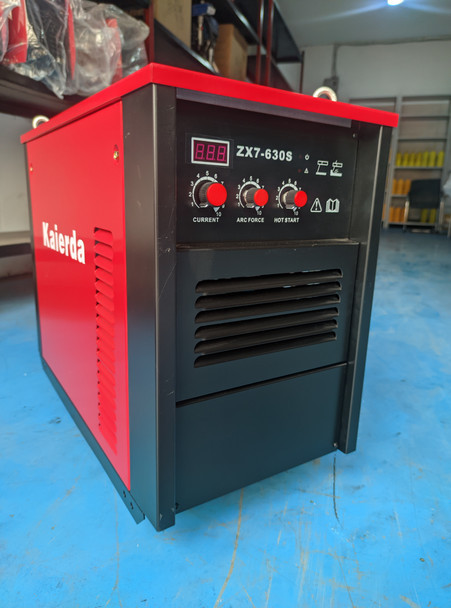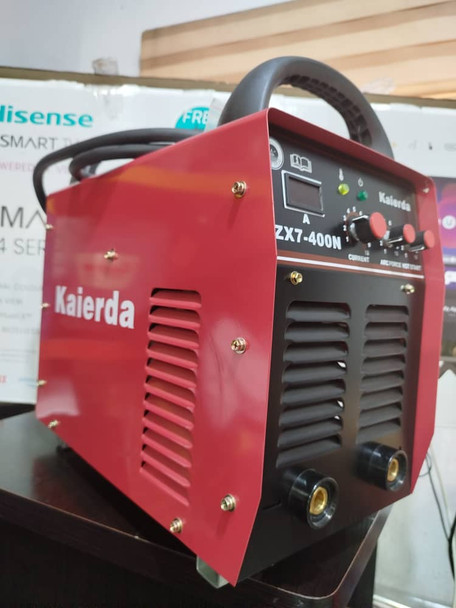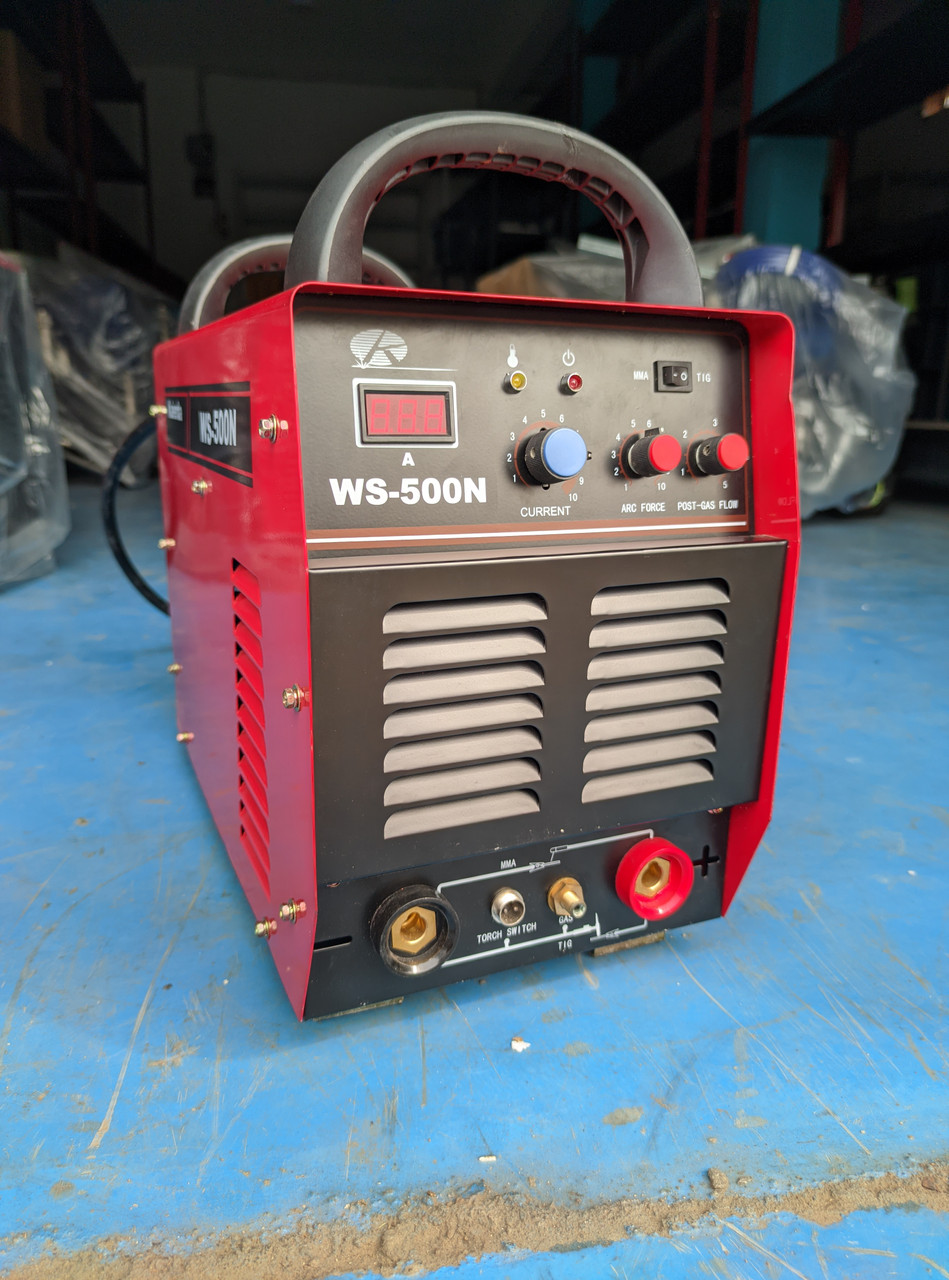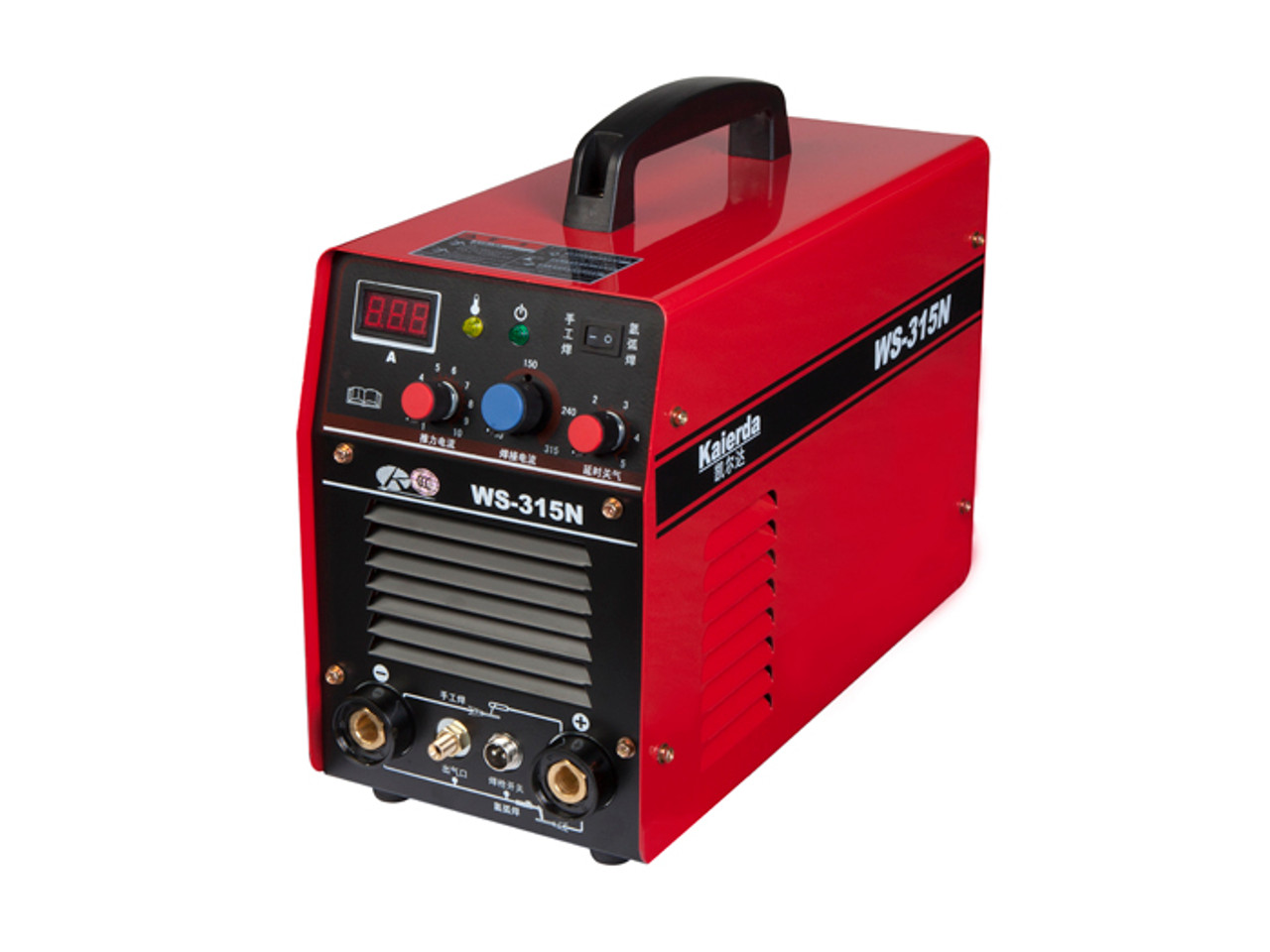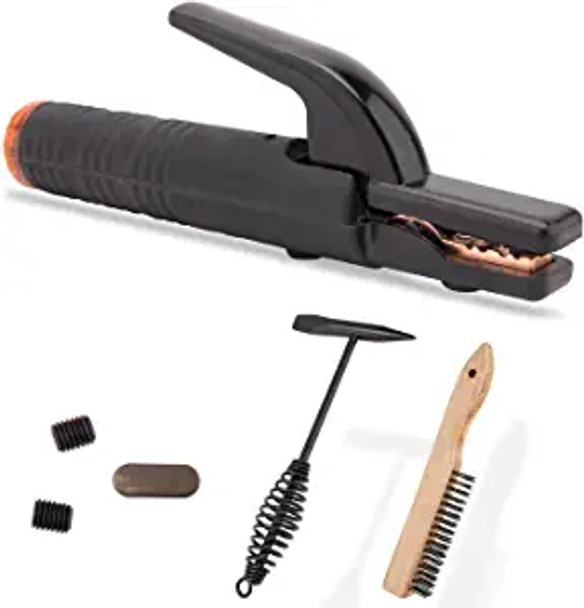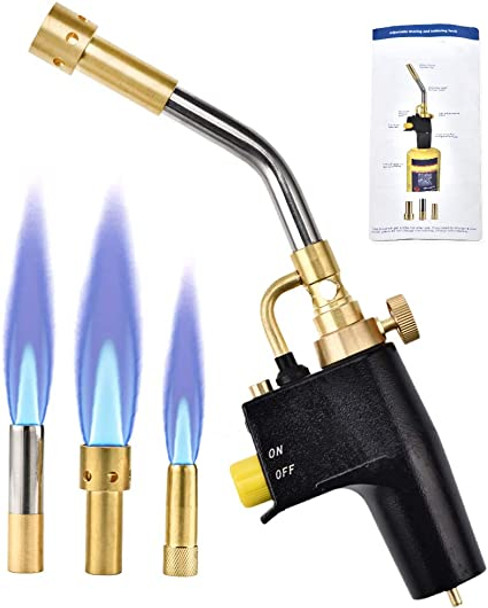Addressing Inconsistent Welding Arcs: Troubleshooting Guide
Key Takeaway:
Maintaining consistent contact tip-to-work distance is a pivotal tip in addressing inconsistent welding arcs. This ensures a stable electrical circuit, promoting uniform heat distribution and arc stability throughout the welding process. By monitoring and adjusting the contact tip-to-work distance as needed, welders can minimize arc fluctuations, achieve smoother weld beads, and improve overall welding quality.
 Kaierda inverter manual arc welding machine ZX7-630S
Kaierda inverter manual arc welding machine ZX7-630S
Introduction
Inconsistent welding arcs can be a frustrating challenge for welders, leading to compromised weld quality, increased rework, and potential safety hazards. An inconsistent welding arc refers to variations in the electrical current and heat output during the welding process, resulting in irregularities in the weld bead formation and penetration. These variations manifest as flickering, sputtering, or unstable arcs, making it difficult to achieve desired weld characteristics.
Several factors contribute to inconsistent welding arcs, including variations in material thickness, improper welding technique, inadequate power supply settings, contamination of the welding environment, and equipment malfunction. Each of these factors can disrupt the smooth flow of electricity between the electrode and the workpiece, leading to fluctuations in arc stability and performance. Understanding the causes behind these inconsistencies is crucial towards achieving successful welding operations. Here’s why it matters:
- Quality: A stable arc ensures uniform fusion between the base metals and the filler material, resulting in sound welds with minimal defects.
- Mechanical Properties: Consistent heat input maintains the desired microstructure and mechanical properties of the weld joint.
- Productivity: A stable arc reduces the need for rework, minimizing downtime and increasing overall productivity.
- Safety: Unstable arcs can lead to spatter, porosity, and other hazards. A stable arc promotes safer working conditions.
In this comprehensive guide, we will delve into the various causes of inconsistent welding arcs, offering insights into troubleshooting techniques and preventive measures to maintain arc stability.
 Kaierda Inverter DC MMA Welding Machine ZX7-400N
Kaierda Inverter DC MMA Welding Machine ZX7-400N
Understanding the Causes of Inconsistent Welding Arcs
1. Incorrect Voltage Settings: One of the primary contributors to inconsistent welding arcs is incorrect voltage settings. Voltage plays a crucial role in determining the heat output of the welding arc. Too high a voltage results in excessive spatter, while too low a voltage causes poor fusion and incomplete penetration.
2. Improper Wire Feed Speed: The wire feed speed directly influences the deposition rate of filler metal and the stability of the welding arc. Inconsistent wire feed speed can lead to variations in the amount of filler metal deposited, resulting in uneven weld bead profiles and inadequate fusion. High feed speeds cause erratic arcs, while low feed speeds lead to underfilled welds.
3. Irregular Contact Tip-to-Work Distance: The distance between the contact tip of the welding gun and the workpiece surface, known as the contact tip-to-work distance, significantly affects arc stability and weld quality. Too close results in excessive spatter and potential tip burn, while too far leads to an elongated arc and poor fusion. Maintaining a consistent contact tip-to-work distance is essential for achieving a stable welding arc.
4. Contaminated or Damaged Consumables: Contaminated or damaged welding consumables, such as electrodes, contact tips, and shielding gas nozzles, can adversely affect arc stability and weld quality. Contaminants such as dirt, grease, or moisture on consumables can interfere with electrical conductivity and gas flow, leading to erratic arc behavior and welding defects.
5. Poor Ground Connection: A secure and properly established ground connection is vital for maintaining a stable welding arc. Inadequate grounding can result in electrical resistance and voltage fluctuations, leading to erratic arc behavior and potential welding defects. Poor ground connections may also cause electrical arcing or sparking, posing safety hazards in the workplace.
6. Environmental Factors (e.g., Wind, Humidity): Environmental factors such as wind, humidity, and temperature fluctuations can impact arc stability and welding performance, particularly in outdoor or open-air welding environments. Wind can disrupt shielding gas coverage, causing atmospheric contamination and instability in the welding arc. High humidity levels can affect electrode moisture content and shielding gas effectiveness, leading to porosity and erratic arc behavior.
 Kaierda Tig Welding machine WS500N
Kaierda Tig Welding machine WS500N
Troubleshooting Inconsistent Welding Arcs
Voltage and Amperage Adjustment
- Identifying Optimal Voltage Settings:
- Begin by referring to the welding machine’s specifications and guidelines. The optimal voltage range varies based on the welding process (MIG, TIG, or stick welding) and the material being welded.
- Conduct test welds on scrap material, adjusting the voltage incrementally. Observe the arc behavior, spatter, and penetration. Aim for a stable arc with minimal spatter.
- Document the voltage setting that provides the best results for future reference.
- Adjusting Amperage for Consistent Arc Stability:
- Amperage (current) directly affects the heat input. Too high amperage can cause excessive spatter and overheating, while too low amperage results in poor fusion.
- Fine-tune the amperage based on the welding process and material thickness. Refer to welding charts or consult experienced welders.
- Regularly check and calibrate the welding machine to maintain accurate amperage output.
Wire Feed Speed Calibration
- Determining the Correct Wire Feed Speed:
- Consult the welding wire manufacturer’s recommendations for the specific wire type (solid or flux-cored) and diameter.
- Consider factors that can affect wire feed speed including material thickness, joint configuration, and welding position.
- Conduct trial runs with different feed speeds to find the optimal setting that ensures consistent deposition.
- Adjusting Wire Feed Speed to Match Welding Parameters:
- Monitor the wire feed during welding. If you observe irregularities (e.g., erratic arcs, excessive spatter), adjust the feed speed.
- Too high a feed speed can lead to burn-back (wire sticking to the contact tip), while too low a speed causes underfilled welds.
- Regularly inspect the wire drive system for wear or damage.
Contact Tip Inspection and Maintenance
- Checking for Wear or Damage on the Contact Tip:
- Visually inspect the contact tip regularly. Look for signs of wear, deformation, or clogging due to spatter.
- Replace worn or damaged tips promptly to maintain consistent electrical conductivity.
- Clean the tip using appropriate tools (e.g., tip cleaners) to remove spatter buildup.
- Ensuring Proper Contact Tip-to-Work Distance:
- Maintain the recommended distance between the contact tip and the workpiece (typically 1/4 to 3/8 inch).
- Incorrect tip-to-work distance affects arc stability. Too close results in spatter and tip burn, while too far leads to elongated arcs.
- Use a gauge or visual reference to verify the correct distance during setup and periodically during welding.
 Kaierda TIG Welding Machine WS 315N
Kaierda TIG Welding Machine WS 315N
Consumable Replacement
- Inspecting and Replacing Worn or Contaminated Consumables:
- Regularly check the nozzle, contact tip, and liner for wear, damage, or contamination.
- Contaminated consumables (e.g., spatter buildup, debris) disrupt the arc and affect weld quality.
- Replace consumables as needed, following manufacturer recommendations.
- Choosing High-Quality Consumables Suitable for the Welding Application:
- Invest in reputable consumables designed for your specific welding process (MIG, TIG, etc.) and material type (steel, aluminum, etc.).
- Quality consumables ensure consistent performance and minimize troubleshooting efforts.
- Keep spare consumables on hand to avoid production delays.
Ground Connection Verification
- Checking the Integrity of the Ground Clamp and Cable:
- Inspect the ground clamp for damage, corrosion, or loose connections.
- Ensure the cable is securely attached to both the clamp and the workpiece.
- A poor ground connection leads to erratic arcs and potential safety hazards.
- Ensuring a Secure Connection to the Workpiece:
- Clean the workpiece surface where the ground clamp attaches.
- Tighten the ground connection to maintain low resistance.
- Periodically verify the ground integrity during welding operations.
Environmental Considerations
- Shielding the Welding Area from Wind and Drafts:
- Wind disrupts the shielding gas flow, affecting arc stability and weld quality.
- Position welding screens or barriers to minimize wind exposure.
- Choose sheltered locations whenever possible.
- Adjusting Welding Parameters to Compensate for Humidity or Temperature Fluctuations:
- High humidity affects electrode performance and can lead to unstable arcs.
- Adjust voltage, wire feed speed, and shielding gas flow to account for environmental changes.
- Monitor temperature variations and adapt as needed.
 Hellog Heavy Duty Jaw welding Electrode Holder set ARC/MMA 500 Amp
Hellog Heavy Duty Jaw welding Electrode Holder set ARC/MMA 500 Amp
Preventive Measures to Maintain a Stable Welding Arc
1. Regular Equipment Maintenance
Implementing a Scheduled Maintenance Routine for Welding Equipment
Establishing a scheduled maintenance routine is essential for ensuring the long-term reliability and performance of welding equipment. Regular maintenance helps identify and address potential issues before they escalate into major problems, minimizing downtime and preventing costly repairs.
- Develop a maintenance schedule that includes tasks such as inspecting electrical connections, checking for leaks in gas hoses, and verifying the integrity of welding cables.
- Follow manufacturer recommendations for lubrication, calibration, and replacement of wear parts to keep equipment operating at peak efficiency.
- Address any issues promptly to prevent arc instability due to equipment malfunctions.
Cleaning and Inspecting Consumables Regularly:
Consumables such as contact tips, nozzles, and diffusers play a crucial role in maintaining arc stability and weld quality. Regular cleaning and inspection of consumables help prevent contamination, reduce arc interference, and extend the lifespan of essential components.
- Implement a routine cleaning regimen for consumables, removing spatter, debris, and other contaminants that may impair performance.
- Inspect consumables for signs of wear, damage, or deterioration, and replace worn components promptly to maintain optimal arc stability and welding productivity
2. Proper Welding Technique
Maintaining a Steady Hand and Consistent Travel Speed:
Welding technique significantly influences arc stability and weld quality. Maintaining a steady hand and consistent travel speed helps ensure uniform deposition of filler metal and proper fusion of base metals.
- Practice maintaining a steady hand and controlling movement speed to achieve smooth weld bead formation and consistent penetration.
- Avoid sudden starts and stops, as well as erratic weaving motions, which can disrupt arc stability and compromise weld integririty.
- Adjust travel speed based on material thickness and welding process (e.g., faster for thin materials, slower for thicker sections).
Ensuring Proper Torch Angle and Manipulation:
Proper torch angle and manipulation are essential for directing the welding arc and controlling heat input during welding. Incorrect torch angle or erratic movement patterns can lead to inconsistent weld bead profiles and inadequate fusion.
- Maintain a suitable torch angle relative to the workpiece surface, typically between 5 to 15 degrees, to optimize arc penetration and shielding gas coverage.
- Practice smooth and controlled torch manipulation techniques, such as straight-line, weave, or circular motion, to achieve desired weld characteristics and minimize arc instability.
- For MIG welding, a slight drag angle (10-15 degrees) ensures good shielding gas coverage.
- For TIG welding, maintain a consistent tilt angle to control heat input.
- Oscillate the torch (weaving) to distribute heat evenly across the joint.
- Avoid excessive weaving, as it can widen the weld bead and affect penetration.
 Hellog Multi Purpose Mapp & Propane Torch
Hellog Multi Purpose Mapp & Propane Torch
3. Operator Training and Skill Development
Providing Comprehensive Training on Welding Fundamentals:
Operator training is critical for ensuring proficiency in welding techniques and equipment operation. Comprehensive training programs should cover fundamental welding principles, safety protocols, equipment setup, and troubleshooting techniques.
- Offer hands-on training sessions and instructional materials to familiarize operators with various welding processes, materials, and welding positions.
- Emphasize the importance of following welding procedure specifications (WPS) and manufacturer guidelines to maintain arc stability and achieve consistent weld quality.
- New welders should receive thorough training on:
- Safety protocols
- Welding processes (MIG, TIG, stick)
- Material properties
- Reading welding symbols and blueprints
Ongoing training keeps operators informed about advancements and best practices.
Practicing Weld Technique to Improve Consistency and Precision:
Skill development through continuous practice and refinement of weld technique is essential for achieving consistent and precise weld results.
- Encourage operators to participate in regular practice sessions and weld proficiency assessments to enhance their welding skills.
- Provide constructive feedback and guidance to help operators identify areas for improvement and refine their welding technique.
- Incorporate simulation training tools and virtual welding systems to simulate real-world welding scenarios and facilitate skill development in a controlled environment.
- Regular practice hones skills and builds muscle memory.
- Focus on:
- Maintaining consistent arc length
- Controlling wire feed speed
- Adhering to proper torch angles
- Recognizing signs of arc instability
- Focus on:
Related Article;
Troubleshooting Common Welding Problems: Expert Tips and Solutions
Beginner's Guide: Basic Welding Techniques and How to Master Them
Conclusion
Inconsistent welding arcs pose significant challenges for welders, impacting weld quality, productivity, and safety. Throughout this comprehensive guide, we have explored the causes of inconsistent welding arcs and provided practical solutions for troubleshooting and prevention.From understanding the importance of voltage and wire feed speed calibration to emphasizing the significance of proper welding technique and operator training, we have highlighted the essential factors that contribute to maintaining a stable welding arc. By implementing preventive measures such as regular equipment maintenance, adhering to proper welding techniques, and investing in operator training, welders can overcome the challenges associated with arc instability and achieve consistent, high-quality welds. As technology continues to evolve and welding practices evolve, it is crucial for welders to stay informed about the latest advancements in welding equipment, materials, and techniques. By staying proactive and continuously honing their skills, welders can navigate the complexities of welding processes with confidence and proficiency.Ultimately, maintaining a stable welding arc is not only about achieving superior weld quality but also ensuring the safety and satisfaction of both welders and end-users. With the knowledge and strategies provided in this guide, welders can tackle the nuances of arc stability and emerge as proficient craftsmen capable of delivering reliable and precision-engineered welds across a variety of applications and industries.Let this guide serve as a valuable resource for welders seeking to optimize their welding practices, overcome challenges, and excel in their craft.
Contact us for more tips and resources just like this.


